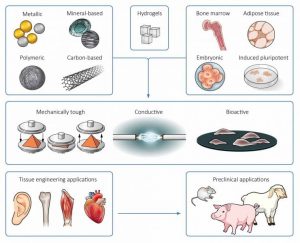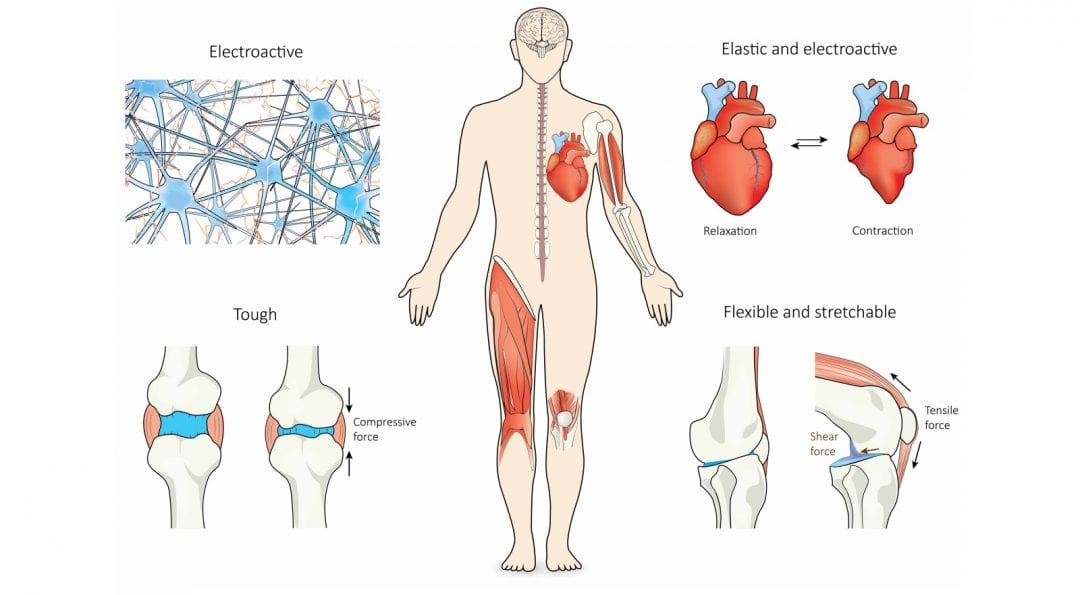
A variety of approaches are currently being used to develop the much-needed multifunctional tissue engineering scaffolds. More information in the Progress Report.
Much research has been done in the field of regenerative medicine, with synthetic tissue constructs being one such success from this field. Tissue-engineering constructs for applications such as organ regeneration and as biological components in cyborganics have been developed. While there has been some success in stem cells tissue in three-dimensions (3D), which enables the cells to grow in a supported environment, there is a major limitation of such tissues in load-bearing applications.
Conventional synthetic tissue scaffolds cannot mimic the native properties of load-bearing or electroactive tissues in the body. Which includes ligaments, bone, cartilage, tendon and bone in the former, and cardiac, skeletal muscle, brain, and nerve in the latter.
A recent Progress Report in Advanced Materials highlights recent advances in the fabrication and application of nanocomposite hydrogels as tissue engineered constructs. Special attention to load-bearing or electroactive has been made and an overview of potential applications for such reinforced constructs is provided.

















